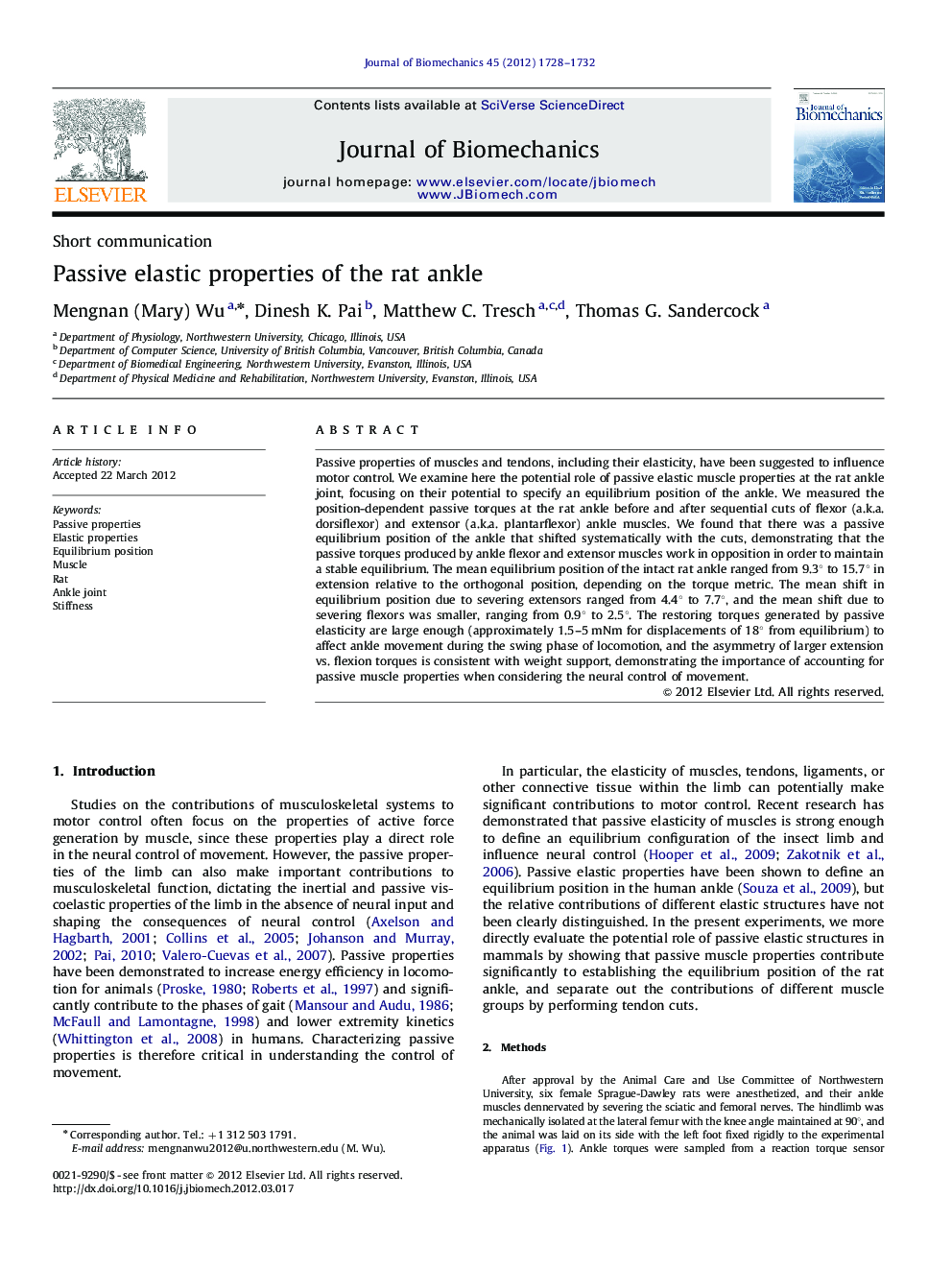| کد مقاله | کد نشریه | سال انتشار | مقاله انگلیسی | نسخه تمام متن |
|---|---|---|---|---|
| 10432343 | 910244 | 2012 | 5 صفحه PDF | دانلود رایگان |
عنوان انگلیسی مقاله ISI
Passive elastic properties of the rat ankle
دانلود مقاله + سفارش ترجمه
دانلود مقاله ISI انگلیسی
رایگان برای ایرانیان
کلمات کلیدی
موضوعات مرتبط
مهندسی و علوم پایه
سایر رشته های مهندسی
مهندسی پزشکی
پیش نمایش صفحه اول مقاله

چکیده انگلیسی
Passive properties of muscles and tendons, including their elasticity, have been suggested to influence motor control. We examine here the potential role of passive elastic muscle properties at the rat ankle joint, focusing on their potential to specify an equilibrium position of the ankle. We measured the position-dependent passive torques at the rat ankle before and after sequential cuts of flexor (a.k.a. dorsiflexor) and extensor (a.k.a. plantarflexor) ankle muscles. We found that there was a passive equilibrium position of the ankle that shifted systematically with the cuts, demonstrating that the passive torques produced by ankle flexor and extensor muscles work in opposition in order to maintain a stable equilibrium. The mean equilibrium position of the intact rat ankle ranged from 9.3° to 15.7° in extension relative to the orthogonal position, depending on the torque metric. The mean shift in equilibrium position due to severing extensors ranged from 4.4° to 7.7°, and the mean shift due to severing flexors was smaller, ranging from 0.9° to 2.5°. The restoring torques generated by passive elasticity are large enough (approximately 1.5-5 mNm for displacements of 18° from equilibrium) to affect ankle movement during the swing phase of locomotion, and the asymmetry of larger extension vs. flexion torques is consistent with weight support, demonstrating the importance of accounting for passive muscle properties when considering the neural control of movement.
ناشر
Database: Elsevier - ScienceDirect (ساینس دایرکت)
Journal: Journal of Biomechanics - Volume 45, Issue 9, 1 June 2012, Pages 1728-1732
Journal: Journal of Biomechanics - Volume 45, Issue 9, 1 June 2012, Pages 1728-1732
نویسندگان
Mengnan (Mary) Wu, Dinesh K. Pai, Matthew C. Tresch, Thomas G. Sandercock,